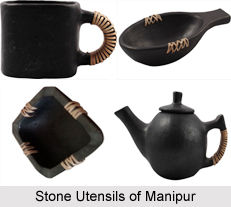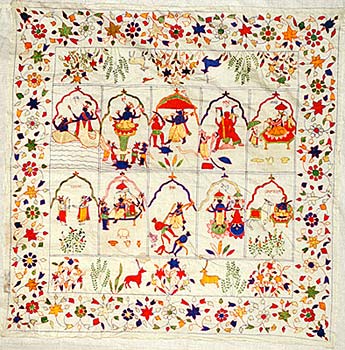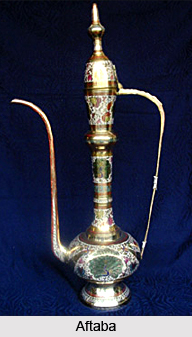 Bamboo mats are exclusive items that are a beautiful addition to any environment. Bamboo mats are made from split bamboo canes with wide strips and are bonded to a water resistant, non-skid backing material. Bamboo mats are created in different parts of India.
Bamboo mats are exclusive items that are a beautiful addition to any environment. Bamboo mats are made from split bamboo canes with wide strips and are bonded to a water resistant, non-skid backing material. Bamboo mats are created in different parts of India.
Bamboo mats are of various types that are manufactured on a commercial basis. Districts like Nowgong, Darrang and Cachar of Assam and other states of North East India are well admired for the creation of bamboo mats. Large-scale commercial production can be seen from Karimganj sub-division of the Cachar district where mats are locally known as `dhara`, `jharia` or `darma`, and thousands of people are engaged in this craft. In the districts of Darrang and Nowgaon, such mats are produced from the dried stalks of various kinds of marshy plants and weeds. While in the district of Cachar, it is produced from bamboo slips.
Among the all other states, Tripura is well known for its skilled creation of bamboo mats. A number of handicraft items are fabricated out of bamboo mats where bamboo splits form the weft in a cotton or rayon warp in Tripura. Due to abundant availability of raw material, this area is famous in this particular craftsmanship. Fine strips are woven on hand-operated looms and joined with rayon threads in a patterned weave placed close together so that the entire screen takes on the texture and pliability of fabric.
 As a rule the bamboo mats are flexible only in the direction of the warp as the weft consists of the rigid bamboo splits. The use of coloured or textured warp is sometimes used for adding colour to the mat. In addition to that, the bamboo can also be dyed to enhance the mat.
As a rule the bamboo mats are flexible only in the direction of the warp as the weft consists of the rigid bamboo splits. The use of coloured or textured warp is sometimes used for adding colour to the mat. In addition to that, the bamboo can also be dyed to enhance the mat.
Bamboo mats are used hugely for several purposes and several varieties of mats are used in house construction while others are used as floor coverings, for sleeping, as surfaces for drying and processing grains, as door and window screens, and as room partitions. Mats and mat articles like `chatais` are very popular in the Indian market. Bamboo matting is priced differently depending on the fineness of the bamboo splits, the width of the mat, and the number of warp threads used. The products are available in a wide range of variety and designs and are used for interior decoration as well as for making wall hangings, flower sticks, table mats, and tray mats. The artisans create mats of a variety of sizes as canvas and later paint is applied on it. Most of the paintings on mats are human and religious figures, animals, birds, scenery etc in different sizes and attractive colours. The products look beautiful with bamboo reed frames.
The procedure of making bamboo mats requires dexterity and the availability of good raw materials. The long bamboos are cut into several parts according to the desired length of the mats to be woven. Then each part is split into several thin pieces, the breadth of such pieces being about 1/8" to 1/16". Splitting is generally done by a `hatu dao` (small bill hook), which is fixed on a `jak` (`v` shaped wooden frame).
 Then the soft portion of such bamboo split is removed with a `dao`, whereupon the flat flexible bamboo strips are obtained for manufacturing mats. Once the bamboo slips are ready, the artisans start actual weaving. In weaving bamboo mats, generally the twilled pattern is followed wherein three slips are taken at a time and woven breadth wise one after another. The same process is repeated to complete the bamboo mat. As soon as weaving is complete, all the four sides of the mat are twisted a little and tide up with a long bamboo slip in order to frame the outer edges which keeps the woven slips intact.
Then the soft portion of such bamboo split is removed with a `dao`, whereupon the flat flexible bamboo strips are obtained for manufacturing mats. Once the bamboo slips are ready, the artisans start actual weaving. In weaving bamboo mats, generally the twilled pattern is followed wherein three slips are taken at a time and woven breadth wise one after another. The same process is repeated to complete the bamboo mat. As soon as weaving is complete, all the four sides of the mat are twisted a little and tide up with a long bamboo slip in order to frame the outer edges which keeps the woven slips intact.
Apart from being a utilitarian item, bamboo mats are extensively used for construction of temporary walls and sheds, big pandals, roofing of country boats, dwelling houses etc. They are often used as decorative items. Keeping in mind the recent trend the artisans create colourful and attractive bamboo mats that fancy the eyes of dwellers of different part of the country. In recent times, various exhibitions are held for handicrafts and the Indian artisans are getting offers and various countries have come forward to promote this craftsmanship as well as the exclusive items.



















